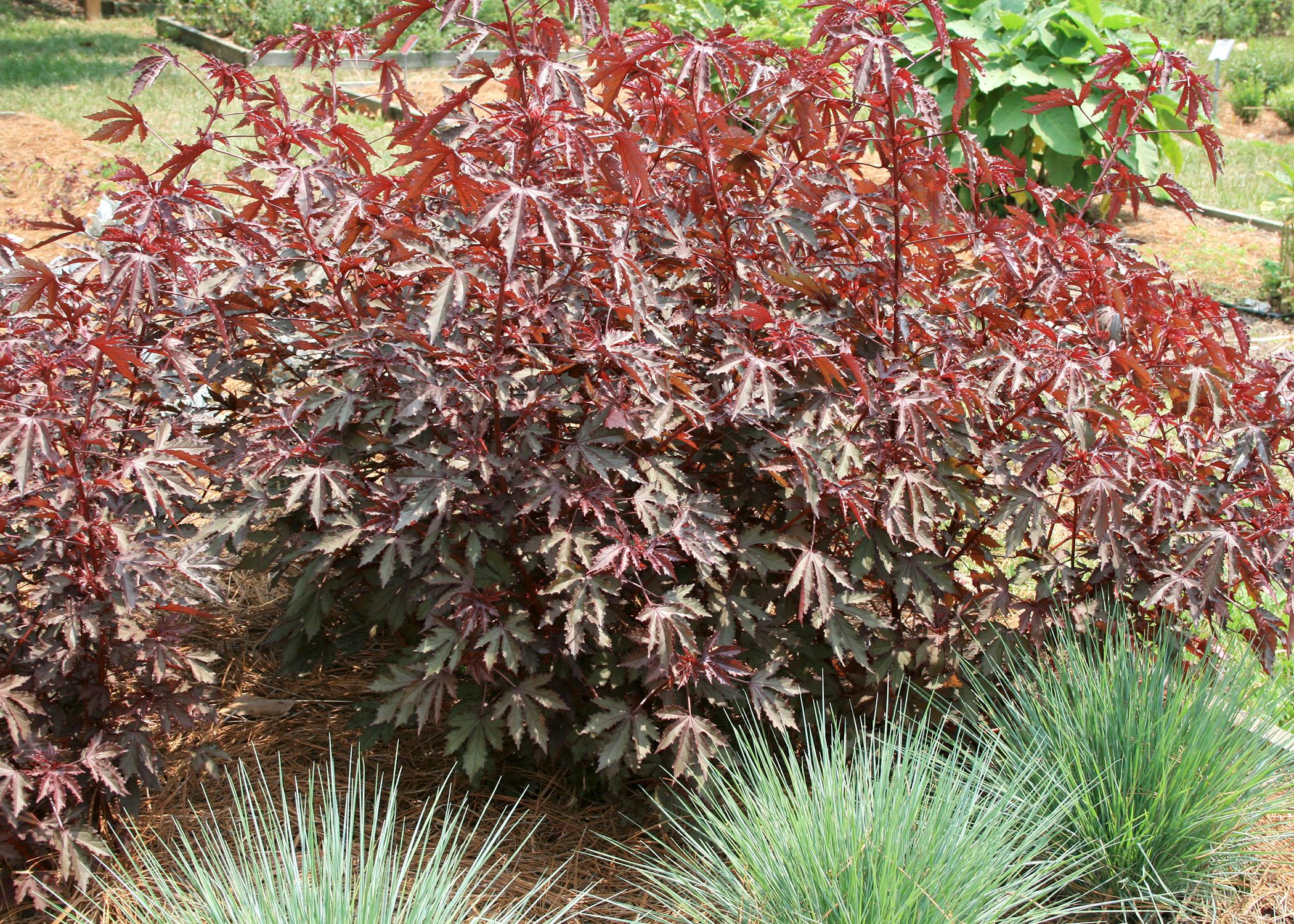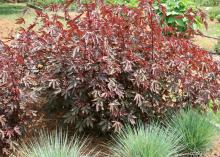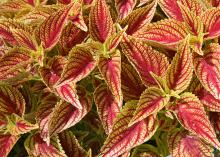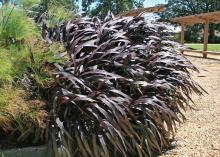Information Possibly Outdated
The information presented on this page was originally released on September 22, 2014. It may not be outdated, but please search our site for more current information. If you plan to quote or reference this information in a publication, please check with the Extension specialist or author before proceeding.
Use annuals for fall local foliage colors
After the heat we’ve had this summer, thank goodness fall officially arrives this week. Fall was always a favorite season for me growing up in Michigan because it meant cooler weather, going to the cider mill and, of course, the beautiful red and orange tree colors.
Living in Mississippi, I still like fall, but I miss the foliage colors. A few red maples scattered about will put on a fiery orange show some years, but it’s not the same as in the North. If you want fall foliage color in the South, here are a few of my favorite plants that should make you happy.
In the landscape, the Mahogany Splendor hibiscus provides awesome color and is a vigorous grower that adds height and excitement. This plant is different than the other landscape hibiscus varieties that I’ve written about in the past that have colorful and gaudy flowers. The flowers of Mahogany Splendor are inconspicuous. It’s the foliage that is the main attraction.
Many garden visitors will initially think this a shrub form of purple Japanese maple, and it’s easy to see why. Mahogany Splendor has dramatic, purple burgundy leaves with coarse, deep serrated edges. When grown in full sun, the color develops deep burgundy tones. Mahogany Splendor will also grow well in partial shade, but the colors won’t be as intense with green and rusty brown tones.
Mahogany Splendor is perfect for Mississippi gardens. The plant withstands high heat loads and is drought tolerant. But like all drought-tolerant plants during times of extreme dryness, periodic watering is required.
Another colorful landscape plant is the grass Pennisetum Vertigo with its coarse, wide, arching leaves that are dark purple to almost black. Wherever Vertigo is planted, it creates a landscape presence that has been described as Pennisetum on steroids. In the landscape, this grass easily gets 4 feet or more tall and wide, so make sure it is planted in a big enough spot.
Since Vertigo is a tropical grass, it actually loves high summer temperatures. The color only gets better with more light, so be sure to plant in the full sun. Because of its tropical heritage, consider Vertigo an annual, and I’ll bet it will be the biggest annual color plant you’ve ever grown.
Coleus is traditionally a summer color favorite, but some of its best color happens when temperatures moderate in the fall. With a growing season from spring to fall frost, coleus belongs in every fall garden and landscape.
One coleus that stands out for me is Big Red Judy. It grows up to 3 feet tall and wide and has brilliant red foliage. Other great coleus selections for your landscape include yellow and red Fiesta Cherry, dark purple and lime-green Solar Set, finely lobed burgundy and gold Kiwi Fruit, and the lime and chartreuse Mississippi Medallion winner Electric Lime.
When you plant several selections together, like we do in Mississippi State University trial beds, the landscape can take on a carnival-like atmosphere.
So next year, start thinking about your fall garden when buying plants for the spring and summer seasons.










